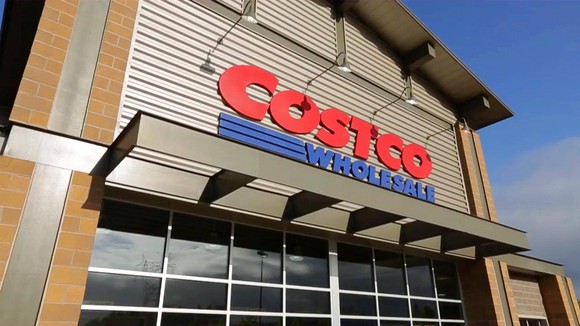Costco Wholesale (COST 0.71%) has been on a roll since the beginning of 2017, posting a string of strong sales results. The warehouse club giant has been gaining market share thanks to its price leadership, along with a slew of store closures by other big-box retailers.
Last month, Costco logged one of its most impressive performances yet as comp sales growth surged in the U.S. The retailer's strong sales trajectory positions it well for long-term earnings growth, despite some recent cost headwinds.
Another excellent month
For the first two months of its 2019 fiscal year, Costco posted a solid 7% comp sales increase, adjusted for changes in gasoline prices, foreign currency fluctuations, and new revenue recognition rules. This included 7.4% growth in the key U.S. market. (More than two-thirds of Costco's warehouses are in the United States.)
Yet Costco managed to outdo itself in November. Adjusted comp sales jumped 10.1% in the U.S., more than offsetting a slight sequential slowdown in international comp sales growth. On a global basis, adjusted comp sales rose 8.5%.

Sales surged at Costco last month. Image source: Costco Wholesale.
As has been the case in recent months, Costco's sales growth was driven primarily by higher customer traffic. On a comparable basis, traffic rose 5.9% worldwide and 6.8% in the U.S. during November. Here Costco stands in stark contrast to most retailers, which have been suffering from steady declines in traffic.
Areas of strength stay consistent
The biggest drivers of Costco's sales growth have remained quite consistent in recent months. In November, the Midwest and San Diego were once again the top-performing regions in the U.S., while Spain, Mexico, and Japan led all international markets.
Among merchandise categories, hardlines remains a standout, logging midteens comp sales growth last quarter. It probably isn't a coincidence that the hardlines category accounts for over half of Sears Holdings' merchandise sales. Sears has closed stores rapidly this year as it spiraled toward bankruptcy, and Costco has seized the opportunity to gain market share in areas like appliances, electronics, and automotive products and services.
One notable aspect of Costco's November performance was a sequential acceleration in growth for its e-commerce business. E-commerce sales rose 23.1% in the first two months of fiscal 2019 -- adjusted for the revenue recognition change -- but soared 34% last month. With Costco set to report its first-quarter earnings results later this week, we may soon learn whether there were any strategy changes behind this uptick in e-commerce growth.
Costco's future is bright
For many years, both investors and Costco's management have believed that the U.S. market was more or less mature -- and that the company would have to look to international markets for most of its future growth. And Costco has achieved plenty of success outside its home market, with 235 warehouses spread across 10 foreign countries.
Nevertheless, the U.S. remains Costco's main growth engine. The company continues to find places to add new warehouses, while also driving strong sales growth at its existing warehouses (which already lead the industry in sales productivity). Based on its recent U.S. sales results, Costco appears to have plenty of runway left for growth in the domestic market.
This also suggests that there are massive untapped opportunities for Costco outside the U.S. Indeed, Costco has just three warehouses in all of continental Europe, and it has not yet entered mainland China (though it hopes to open a store in Shanghai next year).
While Costco's earnings growth ebbs and flows as costs fluctuate, its strong sales gains allow it to become more efficient over time, ensuring that its profit margin stays roughly stable over the long haul. With plenty of growth opportunities remaining -- both in the U.S. and abroad -- Costco is well positioned to continue delivering for investors in the years ahead.
